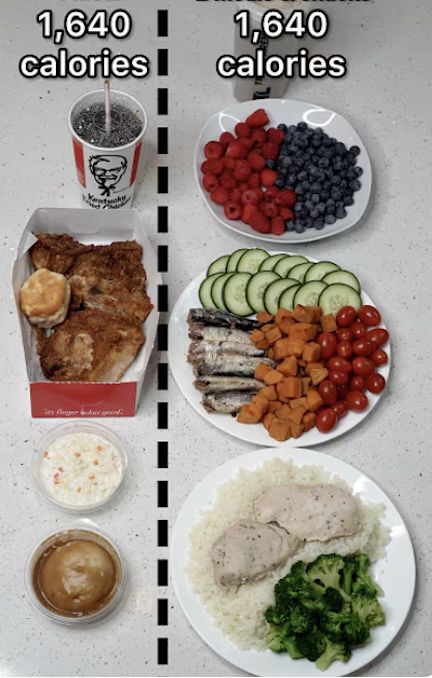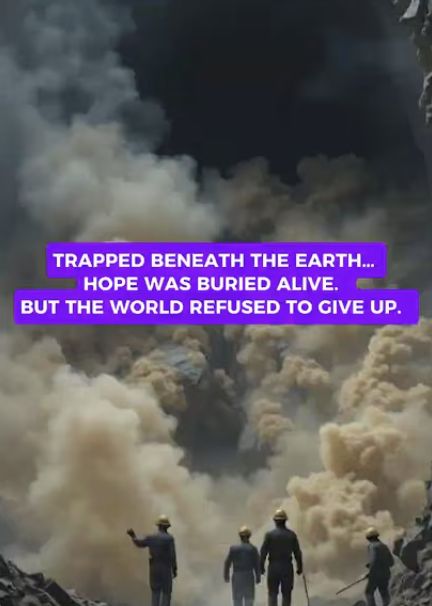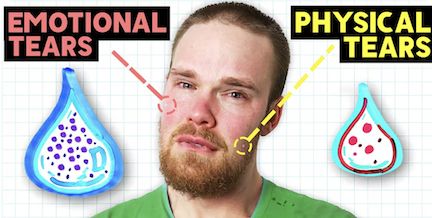Full But Not Fulfilled
The Huffington Post reports:
You’ve just eaten 10 Taco Bell tacos and drank a frozen Mountain Dew and you still feel suspiciously hungry. You’ve consumed about 1,880 calories, but your body isn’t satisfied. What’s happening?
Studies show that satiety, the mechanism that stops us from eating more than what we need, has less to do with caloric intake than it does with the intake of certain macronutrients - types of protein, carbohydrates, and fat - and the physical volume of food. We’re getting plenty of calories when we eat a full sleeve of Oreos, but we’re not getting the nutrients that our bodies need for high quality, sustainable energy. Even though it may feel like a large volume of food, it moves through us quickly - meaning the feeling of fullness fades after we eat.

They continue:
The satiety level of a food is partially due to its nutrient density, which refers to the ratio of nutrients to calories. Though highly caloric, junk foods supply a much lower amount of nutrients compared to the volume of food. In other words, all calories aren’t created equal. For 100 calories, we can eat about 15 cups of spinach or two Oreos. The spinach will physically fill our stomachs with more food, plus provide dietary fiber and vital nutrients. The Oreos, on the other hand, provide little more than intense levels of simple carbohydrates, which give us quick bursts of energy that don’t last.
Desiring less than Jesus’ righteousness results in being unfulfilled.
If we are hurting deep in our belly for Jesus’ presence and guidance, we are on the right path, feeling an intense longing … wanting Jesus’ righteousness as much as a starving person wants food and a parched person wants clean water to drink. Those who have that desire have the promise to be filled. It’s an emptiness which opens us to the filling of the Holy Spirit.
"Blessed are those who hunger and thirst for righteousness, for they will be filled" (Matthew 5:6, NIV).
"But seek first the kingdom of God and his righteousness, and all these things will be added to you" (Matthew 6:33).
"My nourishment comes from doing the will of God, who sent me, and from finishing his work" (John 4:34, NLT).
From Hopelessness to Hope
This is a true story. In 2010, a shocking mining accident took place in Chile that drew the attention of the entire world.
Thirty-three miners were trapped underground, about 700 meters deep. To give you an idea of what that means—it’s roughly as deep as one of our country’s tallest skyscrapers if it were buried straight down into the earth.
Day after day passed as these miners remained trapped underground. Their water and food supplies grew scarcer, and they still couldn’t communicate with anyone on the surface. It seemed completely hopeless.
What would you have done if you were in their place?

After 16 days, although they were still alive, despair began to take hold—some even thought about ending their lives. But then something happened. Outside, rescue workers and experts from around the world tried every possible method and finally managed to drill a small passage that reached them.
All of a sudden, the 33 men went from hopelessness to hope. But did that mean they were saved already? Not yet. They were still trapped underground, but their state of mind completely changed—they no longer felt overwhelming fear or despair. Through that small passage, rescuers were able to send them real, practical help—food, water, and oxygen.
With hope and this support, they endured for 69 long days. In the end, all 33 men were rescued—a true miracle.
So, what can we learn from this story?
Have you ever felt anxious, as if you were also trapped 700 meters underground? In those moments, prayer is like that small passage—it connects us directly with God.
Through prayer, God reminds us of his promises—that soon he will completely remove all the problems and worries of this world. In his new world, all things that cause us distress will be gone forever. It’s as if God is saying to us, “I’ve found you. I’m going to pull you up soon. Don’t be afraid.” That fills us with hope.
And even now, through this “small passage,” God provides us with practical help. He gives us wisdom, loving brothers and sisters, and his Holy Spirit—just like food, water, and air—to sustain us through difficult times.
Yes, when we pray to God and seek his help, we can feel deep peace and no longer be overwhelmed by anxiety.
"Do not be anxious about anything, but in every situation, by prayer and petition, with thanksgiving, present your requests to God. And the peace of God, which transcends all understanding, will guard your hearts and your minds in Christ Jesus" (Philippians 4:6-7, NIV).
Crying is Healthy and Faithful
Many people tend to fight the onset of tears, when crying is in fact a natural and beneficial response to several common emotions such as grief, sadness, dejection, and even joy. Tears are triggered by our emotions, but they are also a practical and protective reaction from the body. We produce three main types of tears.
Basal tears are in our eyes all day. Basal tears are functional, lubricating tears that help improve our vision, focus, and fight against infection. A protein called lysozyme is present in basal tears. This protein protects against viruses, bacteria, and fungi. Basal tears contain oil, mucus, salt, and water. The oil prevents the tears from evaporating and blinking spreads a layer of basal tears on the eye’s surface.
Reflex tears are our eyewash tears. These are triggered by environmental irritants such as dust, smoke, and wind. These tears flush out any irritating material for our eyes. These are also the tears produced when we cut an onion.
Emotional tears flood our eyes in response to strong emotions and are similar to basal tears in chemical makeup but also contain stress hormones and natural pain relievers.

Crying has a number of other proven benefits as well. Crying has a self-soothing effect which helps us to calm ourselves, regulate our emotions, and return us to a more neutral emotional state within a certain period of time. Deep belly breaths from crying and sobbing regulate our heart rate, blood pressure, and breathing - all of which aids in recovering from stress.
Crying can cause our body to produce hormones that make us feel better. We release oxycontin and endorphins after we cry, which can help reduce stress, relieve pain, and lift our mood. In other words, having a good cry can improve our mood after we cry.
Crying is also a way the body rids itself of chemicals that are released in the body to help us cope during times of stress, but can have negative impacts when not processed out of the body. So, if we try to push back the tears or feel shame when we cry, it can have the opposite effect, inducing anxiety, depression, upset stomach, and heart-associated issues.
Crying is also an attachment behavior. Crying signals to others that we need help and support. Most obviously associated with infants and small children, research suggests that crying serves the same functions in adults, facilitating deeper social connections and community support.
That means it is healthy and faithful to embrace what we feel, go through the valley with the Lord, cry the tears, and trust in the promise that we will be blessed on the other side of what brings the tears.
"You have kept count of my tossings; put my tears in your bottle. Are they not in your book?" (Psalm 56:8, ESV).
"Those who sow in tears shall reap with shouts of joy!" (Psalm 126:5, ESV).
"A time to weep, and a time to laugh; a time to mourn, and a time to dance" (Ecclesiastes 3:4, ESV).
"For godly grief produces a repentance that leads to salvation without regret, whereas worldly grief produces death" (2 Corinthians, 7:2, ESV).
"For you have delivered my soul from death, my eyes from tears, my feet from stumbling" (Psalm 116:8, ESV).